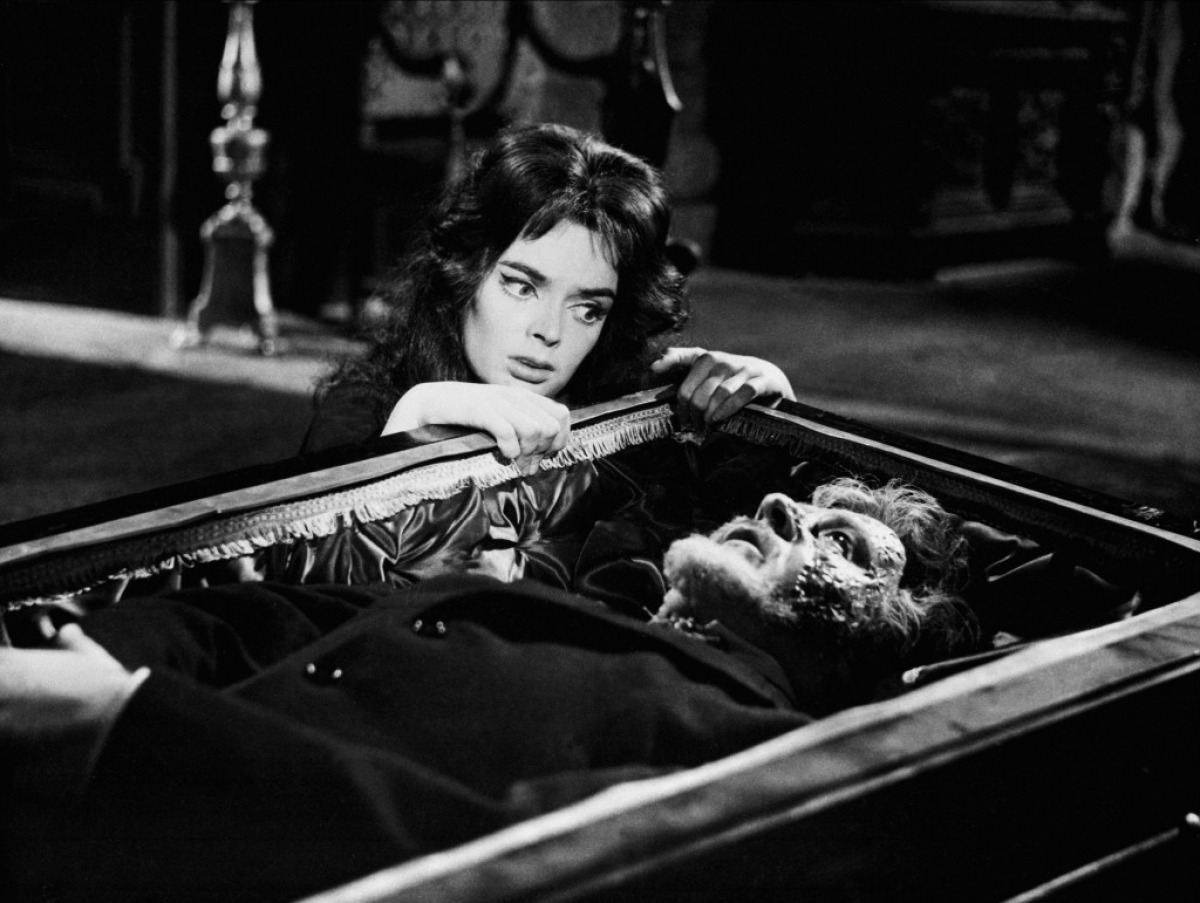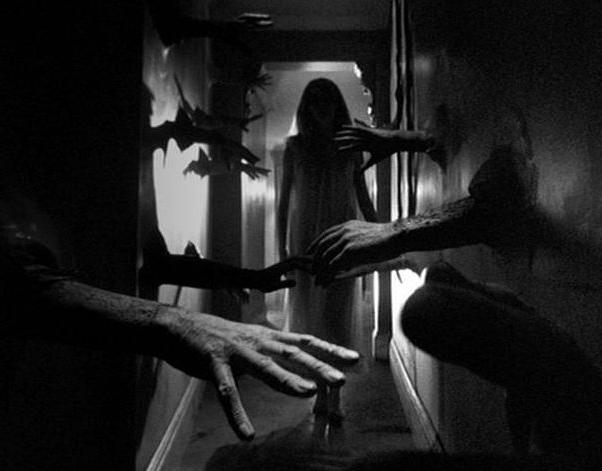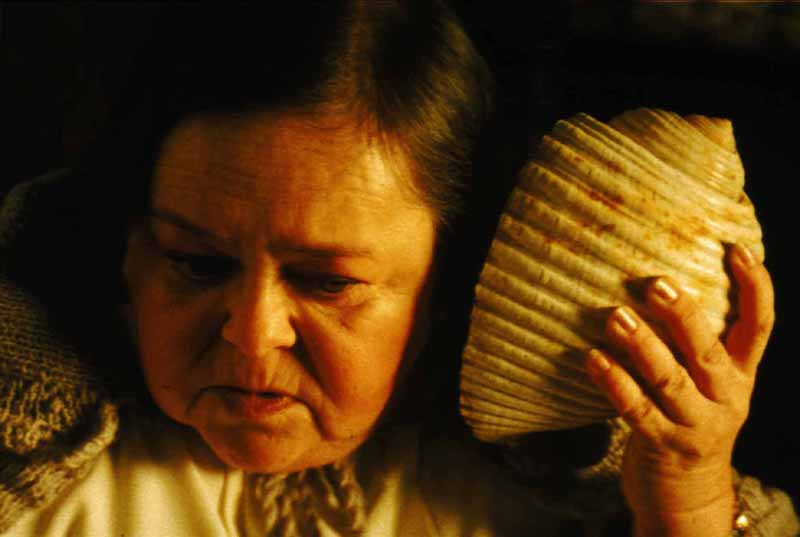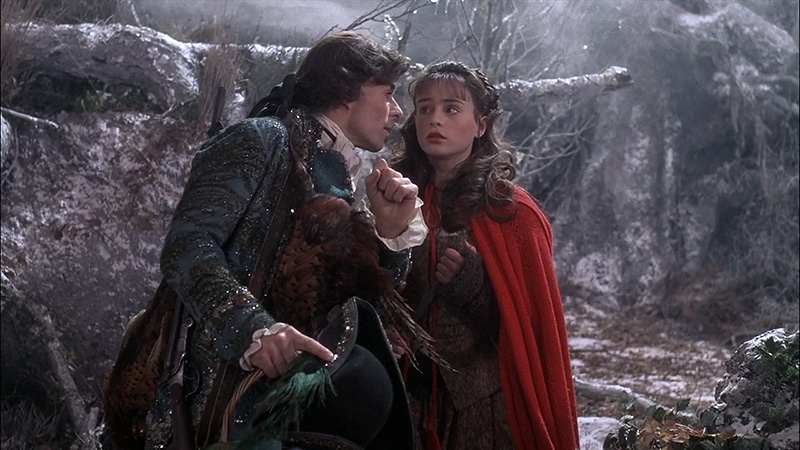14. Hour of The Wolf (1968, Sweden)
Ingmar Bergman is generally known for his introspective dramas, and though he has created some chilling images (the opening sequence in Wild Strawberries, the dance of death in The Seventh Seal), Hour of the Wolf is his sole contributor to horror.
The title refers to the time between midnight and dawn and as Max Von Syndow’s character says: “It is the hour when the most people die, and the most are born. At this time, nightmares come to us. And when we awake we are afraid.” Hour of the Wolf is the visualisation of these repressed nightmares, though unfortunately not a werewolf film.
A married couple live alone in a cottage on a remote island, the wife is pregnant and the artist husband is racked with various guilts and doubts. It soon becomes known that they are not alone, and there are several ghoulish inhabitants of the island’s castle who invite the couple over for a simple meal.
Secrets are revealed, and events go from awkward to murderous in this darkly creepy psychological horror. Von Syndow would continue in the horror vein in the much more straight-forward and yet just as horrific The Exorcist. An interesting example of a highly respected director going down the genre route.
13. Black Sunday (1959, Italy)
While the tales of vampires have been worn thin, and films that feature such are in constant danger of falling into parody, the overexposure is due to the substance of the creatures – immortality, blood-letting and rampant sex are still universally attractive concepts. Inspired by the Russian folk-tale Viy, Black Sunday is the tale of a two hundred year witch’s curse and the doctor’s apprentice, priest and beautiful last descendant of the blighted family fighting to stop it from happening.
Mario Bava with fellow Italians Argento and Fulci are the kings of European horror cinema and could probably populate this list solely with their films but Black Sunday, his first as credited director, is the quintessential Bava production. Expressionist lighting, constantly moving camera, and gore beyond that of his contemporaries all stand as hallmarks of his vision.
The gore itself made it so that it was initially banned in the UK, and US release was stunted by removing the deliciously gruesome nailed on mask of Satan sequence and the eyeless corpse. Even so lead actress Barbara Steel with a diamond cross hanging in her cleavage, shimmers and shocks in the opposing roles of Katia and Princess Asa Vajda. A perfect starting point to the sick joys of Bava.
12. Nekromantik (1987, West Germany)

Prefaced with the introduction warning of “Some of this film may be seen as “grossly” offensive and should not be shown to minors!!!” and barely 70 minutes in length Jörg Buttgereit’s Nekromantik is literally an experiment in censor baiting. A reaction to the perceived systematic desensitization to violence as a result of the Video Nasty classification the film tries its hardest to be the nastiest film it can be by being shocking, disgusting and generally vomiting-inducing.
A street cleaner takes home a decaying corpse for him and his wife to enjoy sexually which results in a threesome, complete with lead-pipe penis substitute and eye-socket foreplay, only for the wife to decide that she prefers the corpse. Though the necrophilia is the obvious talk-point, Nekromantik has a whole spectrum of episodic shock-pieces; with public urination, animal cruelty, prostitute rape, decapitation, and suicide there is something to offend everyone.
Nekromantik may have TV-level production values, and rudimentary filmmaking skill involved, but Buttgereit claimed to never have wanted to direct, only to piss people off – punk rock cinema at its finest.
11. Diabolique (1955, France)
Notable for being the only European horror film to currently be in the imdb top 250, with only Psycho, Alien and The Shining being higher rated, Diabolique is translated as variously The Devils and The Fiends, the original French is what has stuck.
A tyrannous headmaster is killed by his wife and mistress in an attempt to gain ownership of the school, but after drowning him the body disappears with frighteningly ghostly consequences. Director Henri-Georges Clouzot’s wife Véra plays the female lead of the fragile and abused wife of the deceased, Christina with aplomb.
Diabolique was based on novel Celle qui n’était plus the rights of which director Henri-Georges Clouzot snatched from Alfred Hitchcock, reportedly hours before the glabrous director had chance to.
The film itself had a very obvious influence on Hitchcock’s Psycho especially the importance of spoilers and their effect on audience reactions – Diabolique had an early anti-spoiler warning in the credits reading: “Don’t be devils! Don’t ruin the interest your friends could take in this film. Don’t tell them what you saw. Thank you, for them”.
Generally held up as the proto-psychological thriller that has been replicated ever since the key, of course, is always to have a clever twist, a tradition that Diablolique started in spectacular fashion.
10. Repulsion (1968, UK)
The London-set Repulsion is the first to Roman Polanski’s Apartment Trilogy (so named because with each film the majority of the action takes place within a single apartment) that later included all-time horror classic Rosemary’s Baby and French production The Tenant.
A tale of a women’s growing agoraphobia and her strange relationship with the opposite sex – though it does not help that Repulsion is people solely by creepy insensitive male characters. After her sister goes on holiday, Catherine Deneuve’s Carol slowly starts a mental breakdown and the audience are invited into her psychosis.
Blood and gore are kept at an absolute minimum, Polanski preferring psychological tweaking to disgust scares. The stand-out sequence where Deneuve’s traumatised heroine believes there to be an intruder in her flat, which conjures terrors both tension-based and of sheer supernatural spectacle (the grabbing walls hands is not an image one can forget and is cunningly utilised in the film’s Criterion release cover).
The film upon release courted controversy being the first film to feature a (sound) depiction of the female orgasm passed by the BBFC, something that today seems laughable but Polanski’s first English language film has endured by being truly shocking beyond moral outrage.
9. Anguish (1987, Spain)
Eyes play a huge part in Bigas Luna’s Anguish. In fact actress of song-worthy aural beauty Bette Davis was the first choice for the female lead. Sure, on a cosmetic level eyes are just things for horror films to slice and gouge away (and have been since 1927’s Un Chien Andalou), but Anguish takes this quirk further – what we see with our eyes can affect and influence us.
The sight of gore repulses us, sudden movement puts us on edge and, given an unstable mind, viewing too many horror films can breed mania and copy-cat homicidal tendencies.
Starting off as an entertainingly weird super-natural thriller about a middle-aged man hypnotised by his mother into eye-collecting killing-spree, Anguish then “zooms out” and shows an audience watching and reacting to the film (titled The Mommy). Soon the violence is no longer confined to on-screen.
Luna has great fun with this idea, pitching low-key meta-humour, and casting known American talent as The Mommy’s main actors (including Poltergeist’s Zelda Rubinstein), while also making subtle points about violence’s portrayal in the media. The eyeball-torture may not be for the squeamish but an interesting and intelligent horror nonetheless.
8. The Company of Wolves (1984, UK)
As beautifully constructed as Disney films are they tear the guts out of the tales of Grimm – the rape, blood and slaughter is missing and so is the moral. Pre-Walt children were raised on the the original brutal tales, with no need for softening. Fairy tales are, for the most part, a child’s first experience of morality and are future reasons to be cautious.
To make sure that the tales message is engrained in the child’s mind the consequences for the foolish and unlucky are direly violent. The Granny in The Company of Wolves puts it like this: “Maybe you’re too young to understand, maybe no child is ever too young”.
The final of the three great 80’s werewolf films (after An American Werewolf in London and The Howling), complete with a disturbingly different skin-shredding transformation scene, The Company of Wolves consists of several wolf based short stories, culminating into an altered version of Little Red Riding Hood.
Director Neil Jordan’s stylistic choices, like having malicious giant toys roaming the woods, china dolls hatching from eggs and The Devil riding a Bentley through a 18th Century forest, make the film a visual treat. Comparable to Near Dark in that both amp up and transplant a tired cliché of a creature into a whole new vibrant world.





